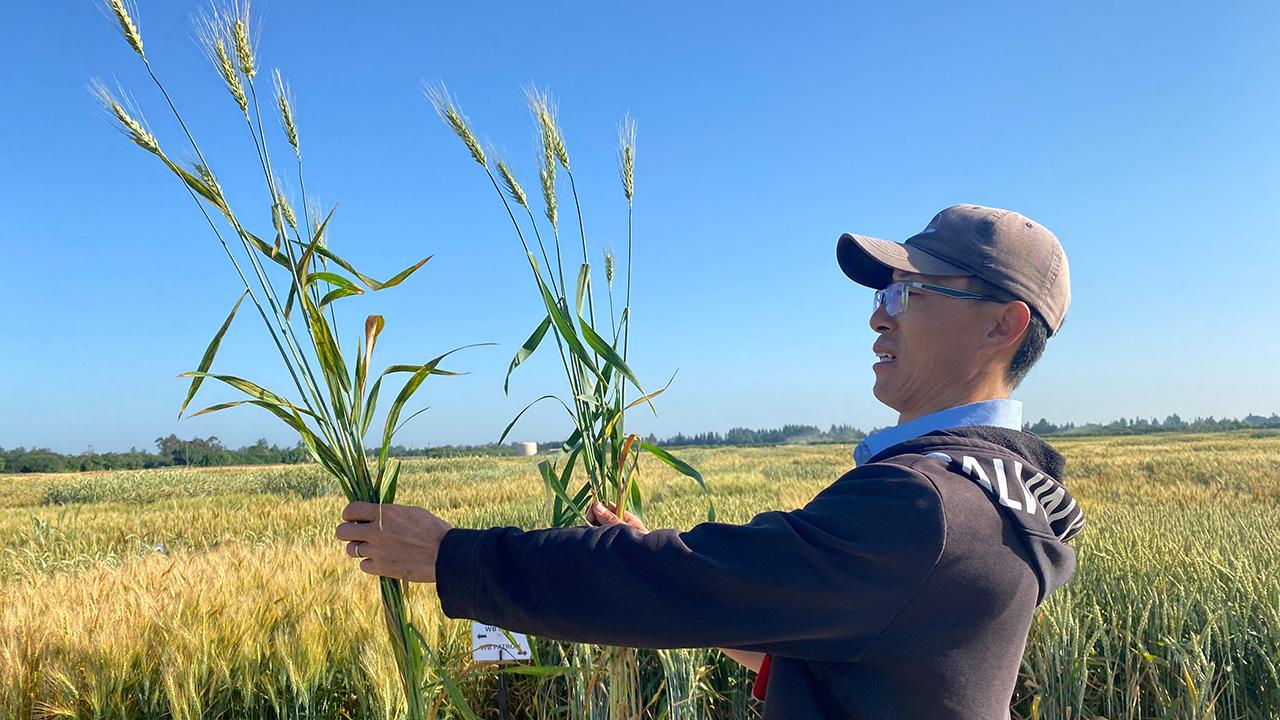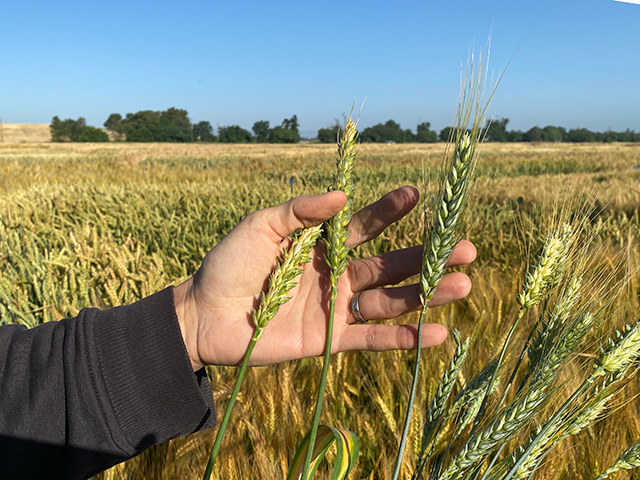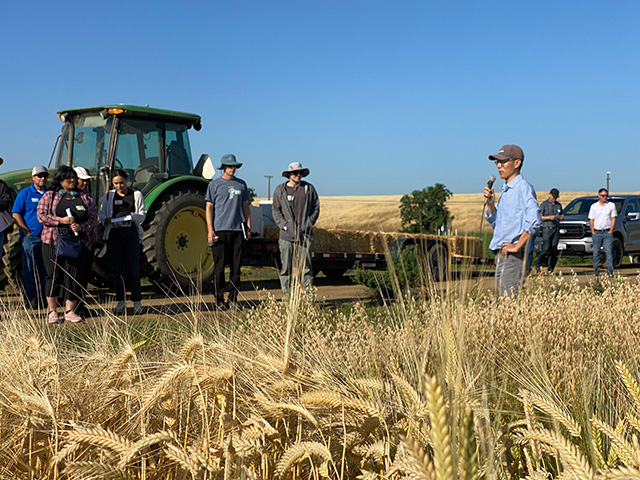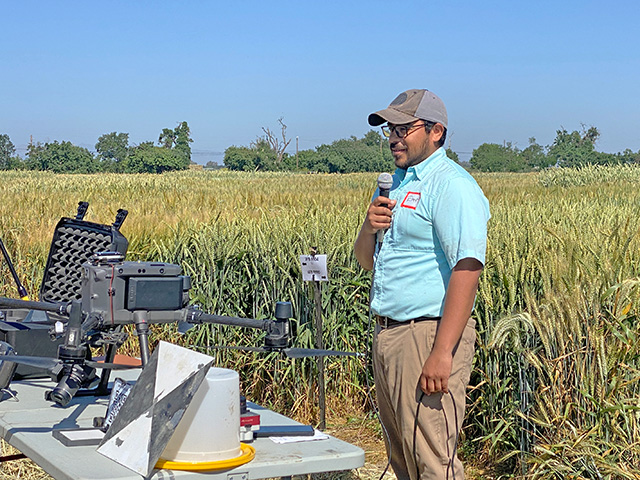
Zhang outlines priorities for Small Grains Breeding Program
Dual-purpose grains offer income during low-water years

Caught between the increasing severity of drought in California and state restrictions on the use of groundwater, grain growers in the Central Valley need options that offer income potential. The recent Small Grains/Alfalfa Field Day, hosted by the UC Davis Department of Plant Sciences, presented research on growing cereal crops with minimal water.
Without such options, growers are projected to fallow hundreds of thousands of acres on previously irrigated land in the Central Valley. The university’s Small Grains Breeding Program is working to meet that need.
“We learned that growers need dual-purpose grains,” said Xiaofei Zhang, an assistant professor in the department who took over the program a year ago.
Meanwhile, diseases such as stripe rust pose threats to crops and heighten the urgency for developing resistant varieties. With wheat the third-largest grain crop in the United States (at an estimated value of $10.9 billion in 2024) and a major source of calories worldwide, researchers need more ways to gather more data more quickly on potential new varieties that can meet needs for both farmers and people.
Dual use, stripe rust, faster breeding
With all that in mind, the UC Davis Small Grains Breeding Program is putting increasing emphasis on three areas.
Wheat for bread and forage: With rain unreliable across the state, grain growers increasingly need varieties that can be flexible in their final use.

During wetter years and a strong grain market, growers can harvest their grains at a later stage for use in making bread. But if the growing season shapes up to be drier than expected, or if the forage market is favorable, they want to be able to harvest wheat earlier for use as animal feed.
So, researchers in the Small Grains Breeding Program are seeking varieties that can work for both, while also improving tolerance to drought, Zhang said.
In particular, the leading variety, UC-Central White, offers good yield and excellent bread-making quality. But when grown for forage, the variety’s awns – the fine spikes that project from the seed – create palatability problems for animals. To solve that problem, the program has two varieties currently in trials that combine short awns with bread-making traits, Zhang said.
At the same time, bread is still the staff of life for an estimated one-third of the world’s population. “We are trying to improve the nutritional value of wheat, such as dietary fiber and reduced gluten allergenicity,” Zhang said.
Resisting stripe rust: While the fungus that causes stripe rust comes and goes in prevalence, the state’s grain growers are always on the look-out for this devastating disease. The state’s wheat, barley and triticale crops remain at risk.
“To prepare for a new potential epidemic, we are researching new resistance genes,” Zhang said.
The focus on stripe rust research comes at a key moment: Recent wheat trials in the United Kingdom show the pathogen causing the disease has overcome the genes that researchers thought would confer resistance.
“This development raises an alarm and highlights the urgency of enhancing our research on stripe rust resistance to diversify resistance sources,” Zhang said.

Make breeding more efficient: The Small Grains Breeding Program is using high-throughput phenotyping to more quickly predict the performance of new lines of grain, Zhang said. Researchers are looking for improvements in plant growth, plant biomass and efficiency in using nitrogen.
Elmer Flores, now a graduate student in the program, is using high-throughput phenotyping to evaluate breeding lines that can produce varieties suitable for dual-purpose planting. The method analyzes a variety of information from different sources, such as special cameras on drones, to quickly identify desirable traits in individual plants for further research.
“We are asking industry, ‘What do you think of our new varieties, and what do you need?’” Zhang said. “We are happy to build partnerships.”
- Information for contacting Zhang is here.
Media Resources
- Trina Kleist, UC Davis Department of Plant Sciences, tkleist@ucdavis.edu, (530) 754-6148 or (530) 601-6846.
- Read more about Xiaofei Zhang's vision for breeding small grains here.
